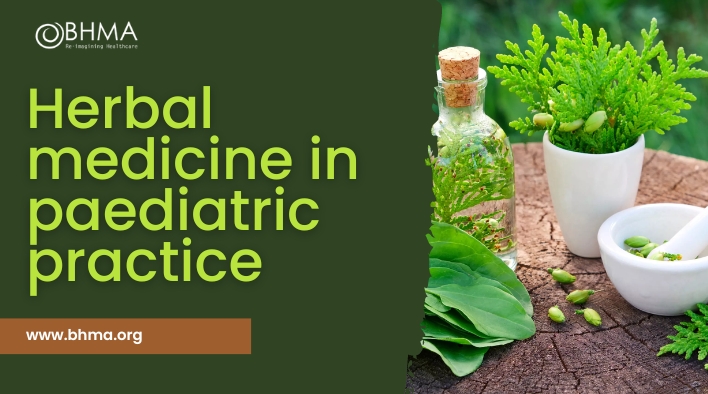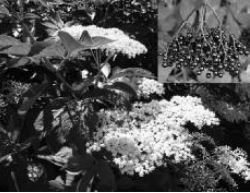Herbal medicine in paediatric practice
Dedj Leibbrandt, Medical herbalist/acupuncturist
Published in JHH14.1 – Children’s Health
After school I trained as a nurse and then studied western herbal medicine for four years, qualifying in 1992. While running my family-oriented practice, I studied Chinese herbal medicine and acupuncture. I regularly see 20+ patients a week at my practice in Chandlers Ford in Hampshire. I have a longstanding interest in first aid and lead a herbal medicine first aid and acute clinic at several child-friendly events – a great place for paediatric clinical experience.
Introduction
Children respond well to herbs. They don’t have to be strong herbs, nor do you need large amount of them. The herbs described here are all easily accessible, easily applied and with high child compliance. They are ubiquitous and simple but for more complex situations professional help should be sought. Qualified herbalists have a great deal to offer with a greater range of herbs and the ability to prescribe individualised preparations. This article is based on my own personal clinical experiences of treating children.
German chamomile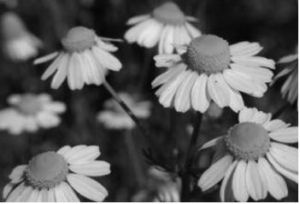
The spelling of the common name is interchangeable, both with an ‘h’ and without. The spelling depends on the origin of the word that you choose to use.
Chamomile grows throughout Europe. In the wild it can often be mistaken for scentless mayweed by the untrained eye. They look quite similar but scentless mayweed has no scent. Crush the flower head to be sure – chamomile has a very distinct smell. Harvest the flower heads on a warm sunny day from June to August.
German chamomile (Matricaria recutita also known as Matricaria chamomilla)
Constituents: 0.24–1.9% volatile oil with the pharmoacopoeial standard of not less than 4mg/kg blue oil.The main volatile oil is bisabolol – up to 50%, and chamazulene 1–15%. Other constituents include amino acids, anthemic acid, choline polysaccharides, tannins, plant and fatty acids and triperpene hydrocarbons.
Good quality essential oil is expensive and should be blue in colour.The colour is formed during distillation when the chamazulene is formed from matricin.
Actions: anti-inflammatory, spasmolytic, vulnerary (wound-healing), antimicrobial, mild sedative, carminative (anti-flatulent), antiseptic, anticatarrhal.
Indications
This herb has to be included in an article about herbs for children, because it has a vast range of uses. It is the matriarch of all children’s herbs as is indicated in its name (matricaria). Chamomile is specifically indicated for children with nervous irritability and gastro-intestinal disturbance. The antispasmodic properties of the volatile oil component of the plant are well documented and responsible for this action. I use it for colic, flatulence, anxiety and mild insomnia. The bitterness in the plant will gently stimulate appetite and digestive activity.
Topically this is a very useful herb. Chamazulene and bisabolol directly reduce inflammation in tissues they come into contact with, stimulate the formation of granulation tissue, and have an antibacterial action. I have used it to treat leg ulcers in the elderly, and on eczema and inflamed irritated skin in children.
It is ideal for babies with nappy rash and teething, both of which can happen concurrently. I recommend making an infusion of the dried herb (two or three teabags per teapot), leaving for half an hour then straining and adding this tea to the baby’s bath. Repeat for several days. It not only heals the inflamed skin, but eases the irritability associated with teething as well.
It is worth mentioning that there have been reported incidences of side effects of chamomile. These include anaphylaxis in people with pre-existing hypersensitivity to ragwort (Asteracea and Compostiae family) and allergic skin reactions when used topically. It is important to note that these are rare.
I am sorry to say that Peter was not very well during the evening. His mother put him to bed, and made some camomile tea; and she gave a dose of it to Peter! ‘One teaspoonful to be taken at bed-time.’
Beatrix Potter, The Tale of Peter Rabbit
Elderflower and elderberries
Elderflower and elderberry cordial is now available from most large supermarkets and can easily be made at home. The flowers can be gathered in spring and early summer; and the berries are collected in August and September.
Elderflower/berries (Sambucus nigra)
Constituents: Flowers: Flavonoids: up to 3% (including quercitrine and kaempherol), quercetin glycosides (including hyperoside, isoquercitrin and rutin).Triterpenes – oleanolic and ursolic acids.Volatile oils (mostly linoleic, linolenic and palmitic), and alkanes.There are also many other constituents including ethers, aldehydes, alcohols and ketones. Berries: Invert sugar, fruit acids, pectin, tannin, vitamin C, anthrocyanic pigments, traces of essential oil.
Actions: Flowers: diaphoretic (promotes perspiration), anti-catarrhal, expectorant, circulatory stimulant, diuretic, topically anti-inflammatory. It is used for the treatment of influenza, chronic nasal catarrh with deafness, sinusitis and is specifically indicated in the common cold.
Berries: diaphoretic, diuretic, laxative.
Indications
I often use elderflower cordial as a diaphoretic in the management of childhood fevers. The flowers are mildly relaxing and they ease agitation and restlessness. Since there is often a catarrhal element for many childhood fevers, this herb is especially indicated for use due to its anti-catarrhal astringent properties. At a time when you are trying to ensure that enough fluids are taken, elderflower cordial cannot be beaten – children love it and will drink it freely. Elderflower cordial can be given prophylactically before the pollen count rises to strengthen the upper respiratory tract and ease hay fever symptoms. It is also useful in the treatment of allergic rhinitis.
The fresh tea is anti-inflammatory and can be used topically to soothe inflamed eyes. Simply infuse in boiling water, let it cool and use as a compress. It is also recommended as a gargle for mouth ulcers and tonsillitis.
Catarrh is common in children. In conjunction with elderflower, I recommend the removal of dairy products, sugary and junk foods and also fridge-cold foods for the duration of the catarrh. The diet should contain plenty of fruit and vegetables, chicken and fish, and a calciumcontaining milk alternative (not soya).
I use the berries, which are rich in Vitamin C, as a cordial. This is also very palatable for children and can be given as a prophylactic in the winter against colds. The berries, when combined with expectorant thyme tea, are also useful in the treatment of coughs. As with most fruits, the berries have a gentle laxative effect in quantity and can be used for mild constipation in children.
Garlic
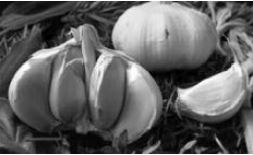 In my mind, there can be no other more powerful antimicrobial herb for children. If a child is too young or unwilling to eat garlic, then it can be rubbed onto the soles of their feet and within an hour you will smell the volatile oil that we are all familiar with on their breath. This makes it an excellent remedy for respiratory tract infections.
In my mind, there can be no other more powerful antimicrobial herb for children. If a child is too young or unwilling to eat garlic, then it can be rubbed onto the soles of their feet and within an hour you will smell the volatile oil that we are all familiar with on their breath. This makes it an excellent remedy for respiratory tract infections.
Garlic (Allium sativum)
Constituents: volatile oil 0.1-0.36% (including sulphurcontaining alliin and allicin), enzymes including allinase, peroxidase, myrosinase and others, proteins, amino acids, Vitamins, minerals, trace elements, lipids and prostaglandins. (Barnes, J,Anderson L, Phillipson D, 2002)
Actions: antimicrobial, antiviral, promotes leucocytosis, hypotensive, lowers blood viscosity, lowers blood cholesterol and triglycerides, prevents atheroma when used long term, and anthelmintic.
Actions: In vitro studies have shown significant antimicrobial activity of garlic to include a wide range of species from staphylococcus aureus and faecalis, escherichia coli, proteus mirabilis, salmonella typhi, providencia, citrobacter, klebsiella pneumoniae, hafnia, aeromanas, vibrio, bacillus gener, candida spp, aspergillus spp, mycobaterium tuberculosis, helicobacter pylori, giardia intestinalis, parainfluenza type 3, herpes simplex type 1 and influenza B.
Indications
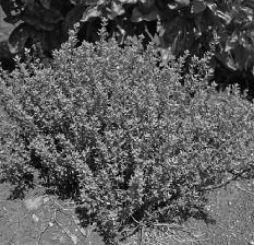 There is traditional use for the treatment of chronic bronchitis, respiratory catarrh, recurrent colds, bronchitic asthma, influenza, and whooping cough. More modern research is focused on its use in atherosclerosis and hypertension with fibrinolytic and lipid lowering effects. Also its anticarcinogenic and immunomodulatory activities.
There is traditional use for the treatment of chronic bronchitis, respiratory catarrh, recurrent colds, bronchitic asthma, influenza, and whooping cough. More modern research is focused on its use in atherosclerosis and hypertension with fibrinolytic and lipid lowering effects. Also its anticarcinogenic and immunomodulatory activities.
The uses of garlic are vast and we could all benefit from its huge array of good actions. Garlic can be added to soups or in many other foods and the caregiver of the sick child should use their knowledge of the child and their culinary skills to find ways of administering this useful herb.
Useful tips: cut open a garlic capsule and add the contents to a teaspoon of honey. In the treatment of threadworms a small clove of garlic can be inserted in the child’s anus overnight – prick the garlic with a pin a few times and leave the papery layer on. Do this for two nights in a row and then repeat on day 14 and 15 days to kill the recently hatched eggs.
Thyme
Thyme tea is an extremely useful antimicrobial herb with far reaching affects. The best time to collect thyme leaves is on a hot day between June and August when the plant is in flower and the essential oils are at their peak.
Thyme (Thymus vulgaris)
Constituents: 0.8–2.6% volatile oil with the pharmaceutical standard of no less than 1.2%. Phenols are the major component (20–80%) primarily thymol and carvacrol. Other constituents include flavonoids, caffeic and rosmarinic acid, reins, saponins and tannins.
Actions: Carminative, digestive tonic, spasmolytic, antimicrobial, antiseptic, relaxing expectorant, astringent, anthelmintic, antitussive, secretomotor effect.
Indications
Dyspepsia, chronic gastritis, bronchitis, pertussis, asthma, diarrhoea in children, enuresis in children; as a gargle for laryngitis and tonsillitis. Specifically indicated in pertussis and bronchitis.
The use of this herb for pertussis is well documented and according to Weiss (1991), the tea on its own will, in most cases be sufficient.
There is a traditional combination used by medical herbalists of thyme and wild cherry bark (Prunus serotina) which, when used together, is invaluable in treating an irritable tickly cough in all ages. Sore throats and tonsillitis/ laryngitis can be soothed with sage or thyme tea. Thyme tea is delicious and lends itself to the addition of honey and lemon especially where children are concerned. It is a useful carminative with antimicrobial with high tannin properties so it not only treats the cause of infective diarrhoea, but also stops it and eases spasmodic visceral pains.
Oats
I have included this useful plant due to its accessibility in the shops. Perhaps it is not widely known that this is also a fantastic medicinal plant that has been used for centuries.
Oats (Avena sativa)
Constituents: Saponins (including avenacosides A and B), alkaloids (including indole alkaloid, gramine, trigonelline, avenine), sterol (avenasterol), flavonoids, silica (particularly in the straw), starch (50% in the seeds), protein (including gluten), minerals (calcium, iron, phosphorus, copper, magnesium, zinc), vitamins B1, B2, D and E, carotene, fat, fixed oil.
Actions: antidepressive, thymoleptic, cardiac tonic, nervous system restorative, nutritive, demulcent, vulnerary
Indications
Depression, melancholia, menopausal neurasthenia, general debility, childhood eczema.
Conversely, oats can be taken at bedtime due to their mild sedative and hypnotic properties, which are due to the indole alkaloid gramine. Somehow our bodies know how to use the chemical constituents to our best advantage.
Oats are easy to administer to children in porridge or oat bran, which provides nourishment and nervous support especially during the winter months. The nourishment aspect is also useful after a bout of illness as oats contain a high percentage of protein and are easy to digest. Porridge provides good recuperative properties and stamina, addresses fatigue and lifts the spirits.
Oat bran contains silica, which has local healing effects, which can help heal skin problems when applied locally. It can be applied as a poultice for wounds, burns and neuralgia. I use this herb in the form of an oat milk bath in atopic eczema presenting with dry and itchy skin. This is easy to make by placing two large handfuls of oats inside a pop-sock or old pair of tights, tying to the hot water tap and allowing the bath water to run through it. This will turn the bath a milky white colour. The oats in the sock can be used as a sponge directly onto the skin instead of soap.
Oats have fairly recently been put back into the British National Formulary in the preparation Aveeno cream which contains colloidal oatmeal in an emollient base and is recommended for dry and itchy skin.
Caution: Gluten may be a problem in sensitive individuals (eg those with coeliac disease).
Bibliography
- British Herbal Medicine Association (1983) British herbal pharmacopoeia. Bournemouth: BHMA.
- British National Formulary 64, December 2012. London: BMJ Group and Pharmaceutical Press.
- Grieve M (1931) A modern herbal, (ed CF Leyel 1985).London: Jonathan Cape.
- Hoffmann D (1990) The new holistic herbal, second edition. Shaftesbury: Element.
- Mabey R (ed) 1991 The complete new herbal. London: Penguin. Mills SY (1993) The essential book of herbal medicine. London: Penguin.
- Weiss RF (1991) Herbal medicine. Beaconsfield: Beaconsfield Arcanum.
- Wren RC (1988) Potter’s new cyclopaedia of botanical drugs and preparations. Saffron Walden: C W Daniel.

